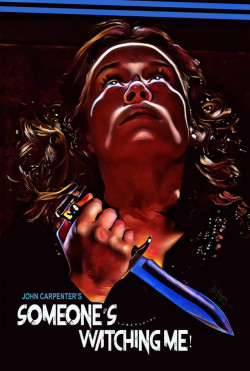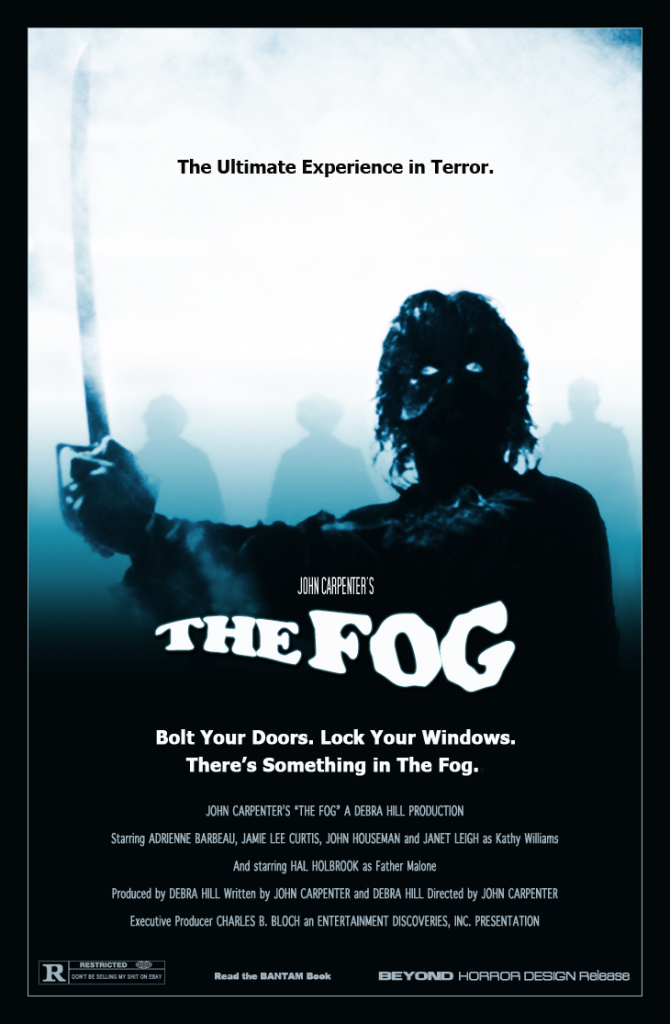These ten movies directed by horror-master John Carpenter sadly live on as underrated additions to the horror film genre—in fact, many of these you won’t ever hear mentioned in daily horror culture, but that’s a shame because all of these are worthy of at least a little attention.

Someone’s Watching Me (1978)
While this horror movie isn’t truly a paranormal horror tale, it is a classic horror tale that many women can relate to in their real lives—being stalked. True to form of successful movies that continue to live on from the 70s, Someone’s Watching Me (1978) is a traditional, “less is more,” type of piece. It relies upon the situations that would if one were to experience them in own life, would cause incredible anxiety and lasting fear. This is possibly Carpenter’s most underrated movie, perhaps simply due to the years that have passed since it was released. In truth, it’s the kind of movie that might constantly be giving loud advice to the main character while she gets increasingly sticky situations.

The Fog (1980)
As the title suggests, this film brings its scare from the fog—it’s a horror movie that focuses on the creeping and inevitable, there is no stopping the fog from rolling in, especially when it moves against the wind. What can you do when there is something deadly in the fog—something that moves with it, that kills without provocation? All you really can do when it comes is bolt your doors, lock your windows, and stay inside your house. This story of Captain Drake and his ill-fated crew is definitely a classic worth watching or re-watching if it has been a while.
Enjoy seafaring horror? Check out our article on hauntings at sea as well

Creepshow (1982)
Honestly, this is one of those classic movies that you just have to watch, anthologies this entertaining are few and far between and while it’s not nail-bitingly scary, each of the stories are interesting and unique. This movie scared the pants off of me as a child, because it never went over-the-top with any attempts to use technology that was out of its reach but just believable enough to allow you to be in the story with the characters.

Christine (1983)
The classic tale about a boy and his first car—his possessed car that is. Have you ever felt that someone you know is overwhelmingly obsessed with one of their belongings, to the point that their life and well-being becomes intertwined with the well-being of their belonging? This film is among the first of its kind to really put an emphasis on the possession of an inanimate object in a meaningful way.

Prince of Darkness (1987)
Although there are many movies based on the emergence of Satan, this was possibly one of the most imaginative takes on how the Prince of Darkness might escape from hell into the world. After a priest finds a huge vial filled with some unidentifiable slime, he requests that a scientist and his students to help him figure out what it really is; finding out what it is, is only a small part of the problem, once they find out they’ll realize it’s already too late. The end is already beginning, will they be able to stop it in time?

They Live (1988)
This is one alien horror flick that stands out among the rest, They Live (1988) is a movie that is classic from the time that it was made and is definitely worthy of a shout out or three. If you’ve ever wondered where the line, “I’ve come here to chew bubble gum and kick ass—and I’m all out of bubble gum,” comes from, you’re in luck. Aside from the wrestler to actor shenanigans with Rowdy Roddy Piper, the acting is what you might expect from a movie made in the late eighties. Forget action movie alien invasions, this kind of invasion is creepier than any other witnessed in cinema history.

In the Mouth of Madness (1994)
This movie shows how society might devolve if violent books, movies, and video games were truly to blame for the erratic behavior of human beings—can an author really have the sway over the way people act, well if you were to read a Sutter Cane book, you might not be able to control yourself at all. It might sound far-fetched, but the easily persuaded might be just a short read away from storming the streets with axes in hand. This is not a predecessor of The Purge (2013), it’s another Carpenter movie that stands on its own within the horror genre, as a horror ride of the imagination—or at least the imagination of an author who wants to cause people to go mad.

Village of the Damned (1995)
This is one of those movies where the terror develops over time, but if you’re one of those people who finds small children disturbing, this is definitely one that you might enjoy. What I like most about this movie is the creep factor—it’s not scary in the traditional sense, no real startling moments, nothing is going to pop out and scare you. The focus of the fear factor here is how it would feel to have a malevolent, creepy child in control of your actions. It reminds me of The Bad Seed (1956) if Rhoda were able to force you to kill yourself with her eyes.

Vampires (1998)
Along with zombies, vampires have been creatures that have been overworked to death in books, films, and television shows, everyone has a new take on it to show why their vampires are somehow better, scarier, or more realistic than everyone else’s. Originally creatures that would incite fear, now they’re more and more often portrayed as objects of romance, love interests, so overdone that they went from truly evil, to rebellious bad boys. Fear not, Vampires (1998) is still in the genre of horror, where vampires truly are evil creatures suited only for hunting.

The Ward (2010)
Not conceived to be a true horror movie, this paranormal thriller offers more in the way of jump scares than much of anything else—while it doesn’t boast a well-known cast, the cast does a convincing job of selling their fear. The plot is enjoyable and decently executed, nevermind some of the plot holes, but the climax of fear is typically punctuated by a complete loss of the moment, followed directly by a cheap startle. The only thing that makes this movie less enjoyable is the ghost itself; we get a clear view of her from the beginning and there is no room left for that character and plot device to grow. It has its own share of twists and turns though, so the important thing about this movie is to watch until the very end—it doesn’t end exactly how you think it would.

Georgia-based author and artist, Mary has been a horror aficionado since the mid-2000s. Originally a hobby artist and writer, she found her niche in the horror industry in late 2019 and hasn’t looked back since. Mary’s evolution into a horror expert allowed her to express herself truly for the first time in her life. Now, she prides herself on indulging in the stuff of nightmares.
Mary also moonlights as a content creator across multiple social media platforms—breaking down horror tropes on YouTube, as well as playing horror games and broadcasting live digital art sessions on Twitch.
